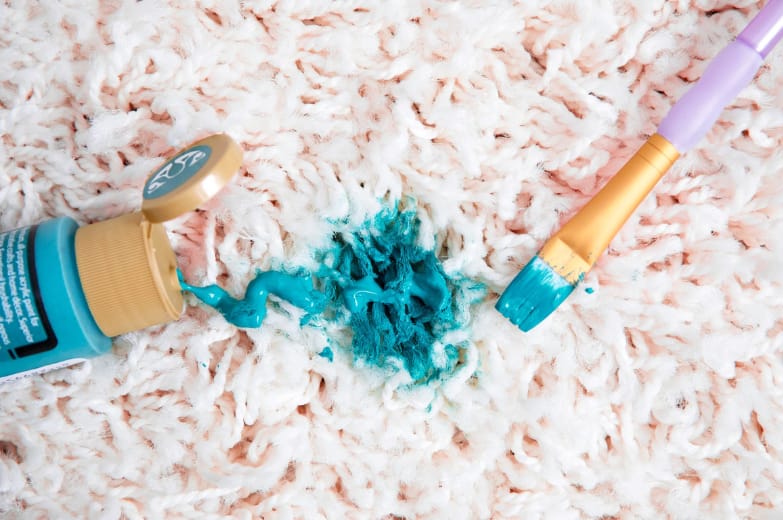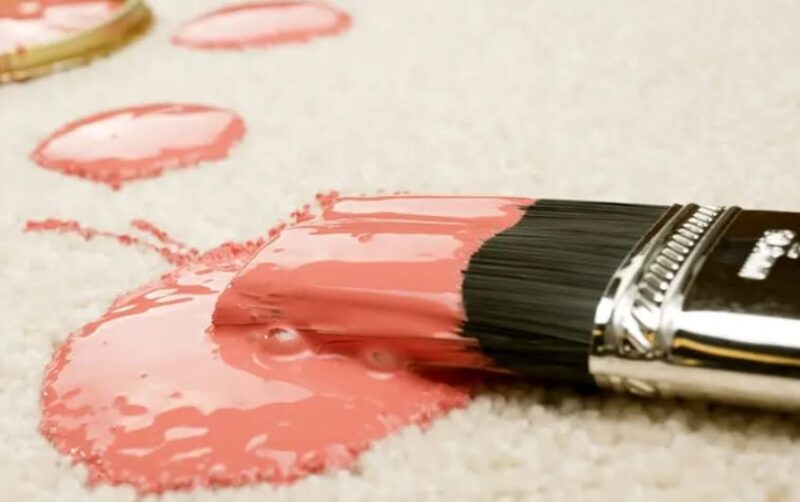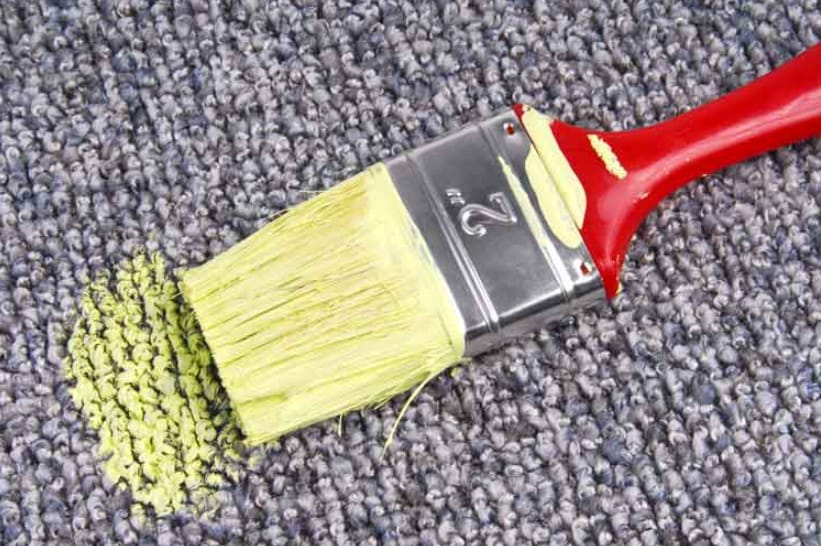Perhaps you’re repainting the walls in your living room. Possibly your children discovered the acrylic paints in the craft cupboard.
Even if you use a tarp or sheet barrier to guard your carpet against painting spills and splatters, it’s far too easy—and frankly, pretty frustrating—to wind up with paint where it shouldn’t be.
Paint may be tough to remove from many surfaces, but fabric and upholstery, including carpet and rugs, can be particularly challenging.
The crucial aspect here is time: clean up the splattered paint as soon as possible (with the correct equipment!) to avoid leaving a lasting trail of Buxton Blue or Secret Meadow on your carpet. When the paint dries, consider it set—and, sadly, quite hard to erase without expert assistance.
Remember that removing paint from the carpet ultimately relies on the type of carpet you need to clean. Water-based paints, such as latex or acrylic, require different cleaning techniques than oil-based paints.
You can keep the carpet paint from turning into a permanent highlight in your house if you have the correct cleaning gear and a grasp of the clean-up methods.
Your carpet is subjected to considerable wear and tear, from dirty feet to spilled drinks. However, in the instance of splashed paint, you may conclude that your carpeting has met its match.
Perhaps, but not usually. You might be able to save your carpet with water, detergent, and elbow grease. This is how to remove paint from carpet.
How to Remove Water-Based Paint from Carpet

Ideally, capturing the paint stain when it is still wet and easy to remove would be best. Try the following procedures for damp or dry paint removal from latex and other water-based paints.
Dull knife or old credit card, paper towels or white rags, dishwashing detergent, soft-bristled brush, clothes steamer, and vacuum are all required.
1. Fresh Paint Stains Steps
- Remove the wet paint.
To remove the wet paint, use the dull edge of a knife or the edge of an old credit card. Rubbing the stain with a cloth or paper towel will drive the paint further into the carpet fibers.
- Blotting
Blot away any remaining paint on the carpet’s surface using a moist paper towel or white cloth. As the color is transferred, keep moving to a clean region of the fabric. Continue blotting until all of the paint has been removed.
2. Steps for Removing Dried Paint Stains
- Reassemble the dried paint.
Mix hot water and a few drops of dishwashing liquid in a small bowl. Saturate the dried paint stain using a soft-bristled brush—an old toothbrush works well—in the solution. Allow it to settle for five minutes to soften the paint.
- Scrape and blot the surface.
Once the paint has softened, carefully scrape it away from the fibers with a dull knife.As the paint comes off, blot it with a moist paper towel or cloth. Use the brush to apply more of the hot soapy solution as needed. Continue to work until the paint is gone. Remember not to rub, or the paint may smear.
- Increase the heat.
If the heated water treatment does not soften the paint, use a portable clothes steamer to blast the stain with steam.Avoid using a steamer nozzle or a heated iron straight on the carpet, as this might cause the fibers to melt. Scrape and blot carefully until the paint is removed.
- Vacuum and dry.
Allow the carpet to air-dry after removing the paint, and then vacuum thoroughly to lift the carpet fibers and gather any remaining loose paint particles.
How to Remove Oil-Based Paint from Carpet?

1. Wet paint should be lifted and blotted.
If the paint drip is moist, pull it out and away from the carpet using a dull knife. As you remove the paint and wipe the area with a damp paper towel, use a blast of heat from a clothing steamer to keep the color moist.
As you continue wiping with clean paper towels, straighten a clip and use it to remove carpet fibers.
2. Dry paint should be scraped and blotted.
If the oil paint is dry, gently start peeling as much as possible from the fibers with a dull knife. Pick up the dried paint flakes with a moist paper towel or vacuum.
3. Use a solvent to treat.
Read the small print on the paint label after lifting or scraping and apply the suggested solvent (mineral spirits, paint thinner, turpentine). If none is specified, choose turpentine. Test it on an inconspicuous carpet area to ensure that the solvent does not create a color change.
Blot the stained area with a dab of the solvent on a white cotton cloth. As color is applied, work slowly and move to a clear region of the rag. Always blot, blot, blot—never rub.
4. Rinse and clean.
After removing as much paint as possible, prepare a solution of heated air and a couple of droplets of dish detergent. Using a soft-bristled brush, carefully clean the area where the paint solution was applied.
Rinse the area with a clean soaked rag, then wipe away any remaining water using paper towels.
5. Vacuum and air-dry.
Allow the carpet to dry before vacuuming it to restore the pile.
Conclusion
Spilled paint might detract from the appearance of your carpet. Wet paint is generally simpler to remove. However, dried paint may be removed from the carpeting. Because latex paint is water-soluble,
it is more straightforward to remove than oil-based paint. If the dried paint is latex, you can consider removing all or most of it, but oil-based paint stains are more difficult to remove. If you are unsure of the sort of paint on your carpet, begin by treating it like latex paint.
Removing all traces of latex or oil paint from the carpet may be hard if the spill is substantial. Consider hiring a professional carpet cleaner to assist you. If everything else fails, think about cutting out the destroyed carpet and putting it together with scraps, or hide the stains with an area rug till the carpet can be changed.
